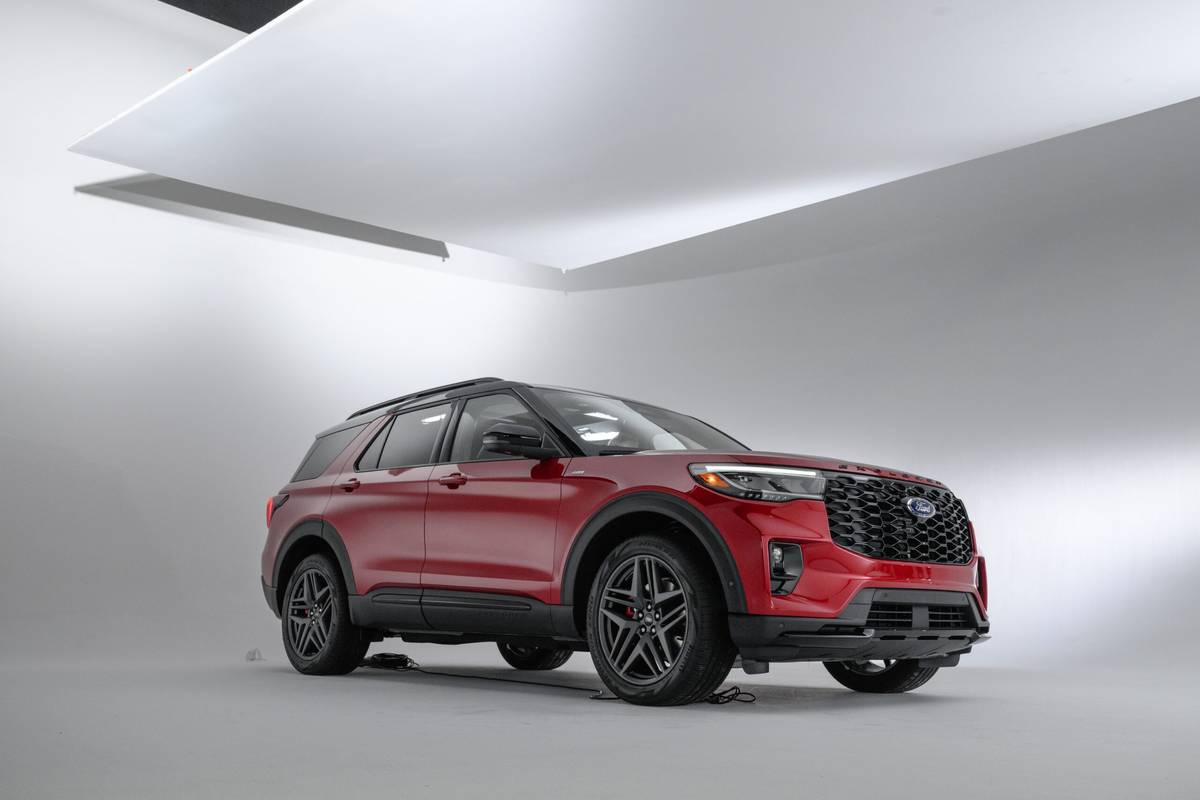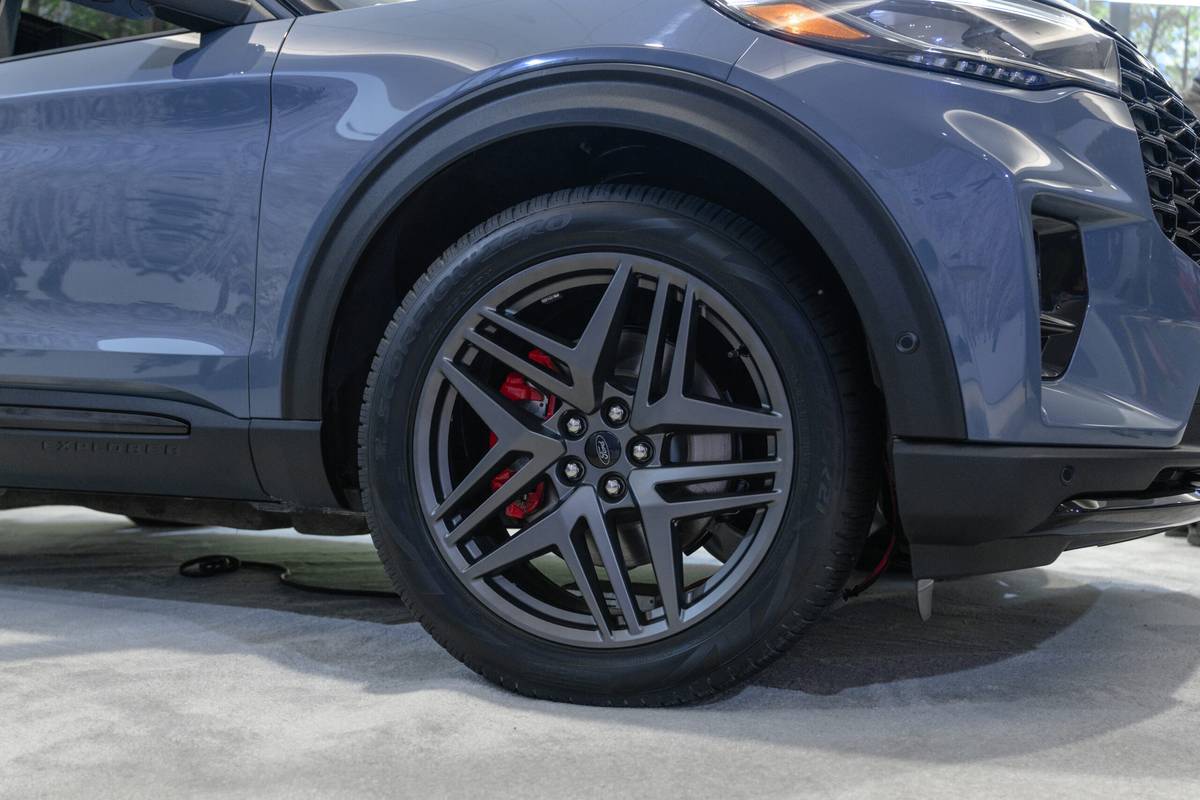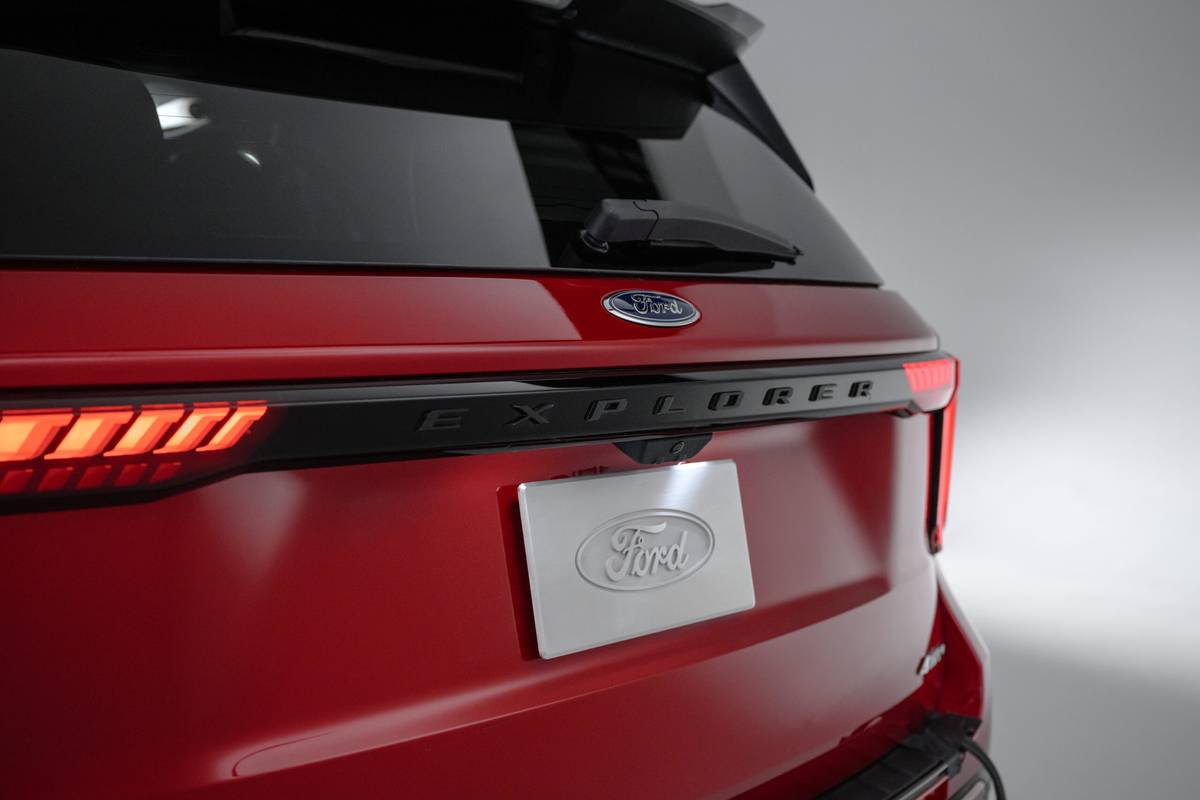2025 Ford Explorer Up Close: Nicely Updated, Still Compromised


The Ford Explorer differs from many other three-row SUVs in one distinct way, and it’s a way that helps it in some areas and definitely hinders it in others: rear-wheel-drive. Most other automakers have made their big family haulers off of front-wheel-drive models with optional all-wheel-drive (Jeep and Mazda being the notable exceptions), while Ford has stuck with the RWD format. It definitely results in a vehicle that’s dynamite to drive; our last bout with an Explorer in a comparison test was full of comments on how fantastic it was on the road.
For the 2025 model year, the Explorer has been refreshed, and I got to check it out in person.






















































Unchanged in Important Dimensions
Previously, the Explorer suffered in interior space, as it was on the small side of the three-row category despite its exterior dimensions. The second- and third-row seats were small, the legroom for those rows was tight, and the cargo space wasn’t as big as those in competitors. This latest update for the Explorer (what the industry refers to as a “mid-cycle refresh”) doesn’t solve any of that, however. Ford didn’t go that deep into the structure of the vehicle, and frankly, nothing short of switching to a FWD chassis is likely to put a future Ford family SUV into competitive space with a Kia Telluride or Chevrolet Traverse.
Yet for some folks, that’s perfectly fine. Maybe the space isn’t the point; maybe it’s about the performance and technology, and that’s where Ford has focused its efforts for 2025. The Explorer’s style hasn’t changed much, but then it didn’t really need to — it’s still fresh and attractive. The new grille options and headlights are barely noticeable, but the rear taillight treatment definitely stands out at night. Some new colors and wheels are enough to keep the SUV fresh, but it’s not enough to elevate it to new heights of style.
Related Video:
Nicer Interior for Sure
What’s really nice to see is that the 10.1-inch vertical screen is gone, which I am not mad about at all. Why? Because when you shifted the old Explorer into Reverse, that really cool vertical screen showed you a backup camera view that took up only half the display. It made it hard to see much behind the vehicle, and when other competitors were having major foot-long horizontal screens that would show you nice, clear, big backup views, the Explorer’s system just seemed like a bad idea.
No more, not with the big 12.3-inch landscape-oriented screen situated high on the dash. The whole interior benefits from this change, with a new layout for the center console, as well. The only teeth grinder here is that the climate controls have been relocated to touchscreen controls, which is never a positive move in any vehicle it’s been done in with relation to ease of use while driving.


























But Ford thinks it has the answer to that: voice commands. Yes, you could do things like change climate control settings and radio stations with voice commands before, but how many people actually do? Well, now you’ve got even more options to do so since Ford is switching up its in-car controls to an Android-based software called the Ford Digital Experience. Google Voice Assistant and Amazon Alexa now basically run the car’s electronic systems, at least the ones you interact with, so perhaps get used to talking to your car more often instead of hunting for the temperature controls and making sure you’ve tapped on the screen hard enough to do something.
The new infotainment interface looks good, however, and seems pretty easy to use — and it’s much faster than the old Sync system was. Combined with the bigger screen and an interior that has materials that are much nicer than before, the Explorer’s interior has seen an excellent upgrade. The Mojave Dusk color is especially nice (it’s almost a dark aubergine-purple) and really pops in sunlight. It’s nice to see something other than black, beige or gray.
More From Cars.com:
- Ford Explorer: Which Should You Buy, 2021 or 2022?
- 2023 Ford Super Duty Up Close: More Useful Tech Is Always Good
- 2024 Ford F-150 Lightning Pricing Revised, Up to $10,000 More Expensive
- Go for the Bronze: 2024 Mustang Mach-E GT Adds Bronze Appearance Package
- 2024 Ford Mustang GT Review: Stomping Into the Future






























Overall, this is a mild refresh for the Explorer, with some tech updates like newly available BlueCruise and the new Google-based system’s interface, plus new interior looks and materials. It should be enough to keep the Explorer popular among its contenders, but it still faces the same deficits that it did before in terms of space and occupant comfort. That’s not likely to change until the Explorer gets a much more extensive redesign.
Cars.com’s Editorial department is your source for automotive news and reviews. In line with Cars.com’s long-standing ethics policy, editors and reviewers don’t accept gifts or free trips from automakers. The Editorial department is independent of Cars.com’s advertising, sales and sponsored content departments.

Detroit Bureau Chief Aaron Bragman has had over 25 years of experience in the auto industry as a journalist, analyst, purchasing agent and program manager. Bragman grew up around his father’s classic Triumph sports cars (which were all sold and gone when he turned 16, much to his frustration) and comes from a Detroit family where cars put food on tables as much as smiles on faces. Today, he’s a member of the Automotive Press Association and the Midwest Automotive Media Association. His pronouns are he/him, but his adjectives are fat/sassy.
Featured stories































